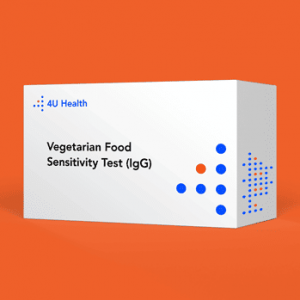
4U Health’s at-home food sensitivity tests are easy to use and provide results in just a few days. They require a small blood sample, which is collected through a finger prick, and analyze for specific IgG antibodies that are often associated with food sensitivities. These tests can help flag potential intolerances to a range of foods, including beef, corn, dairy, eggs, gluten, lamb, peanuts, pork, shellfish, and soy, among others3.
Once you receive your results, it’s important to understand what they mean. Each test will show which foods you may be sensitive to and to what degree. The test report ranks each food on a Class scale from 0-4; Class 0 (normal reactivity) thru Class 4 (very high reactivity). Test findings can provide valuable clues as to which foods you may not tolerate well.
After you receive your results, it’s recommended to use them to guide a temporary elimination diet to confirm your problem foods. A targeted elimination diet involves removing up to four foods at a time from your diet that flagged positive on your report, typically for three to four weeks. During this time, you should pay close attention to any changes in symptoms (i.e., did they improve?).
After the elimination period, you can slowly reintroduce the eliminated foods one at a time, monitoring for any symptoms that may arise. This process can help you identify which foods are causing problems, and which ones can be safely reintroduced into your diet.
It’s important to note that at-home food sensitivity tests are not a definitive diagnosis of food intolerances on their own. They can provide helpful information as a first step to identifying food culprits that may be giving you symptoms, but should be used in conjunction with a targeted elimination diet along with medical advice from a healthcare professional for a definitive diagnosis.
4U Health offers three great choices for IgG food intolerance tests.
Comprehensive Food Sensitivity Test, 240 Foods: Ideal for people who consume a broad-based diet.
Vegetarian Food Sensitivity Test, 198 Foods: Tailored for people who consume a plant-based diet.
Essential Food Sensitivity Test, 96 Foods: Targets a select set of common foods and spices that often cause intolerances.
In conclusion, at-home food sensitivity tests can be a useful tool in identifying problem foods and guiding a temporary elimination diet to confirm your intolerances. These tests are a good first step toward trying to improve your overall health and well-being.
Food Sensitivity Test Reviews: 4U Health’s US food intolerance test reviews
Sources:
The Clinical Use of IgG Food Sensitivity Testing with Migraine Headache Patients. URL.
Elimination Diet. URL.
Treating irritable bowel syndrome with a food elimination diet followed by food challenge and probiotics. URL.
Diet restriction in migraine, based on IgG against foods: a clinical double-blind, randomised, cross-over trial. URL.
IgG Antibodies Against Food Antigens are Correlated with Inflammation and Intima Media Thickness in Obese Juveniles. URL.


